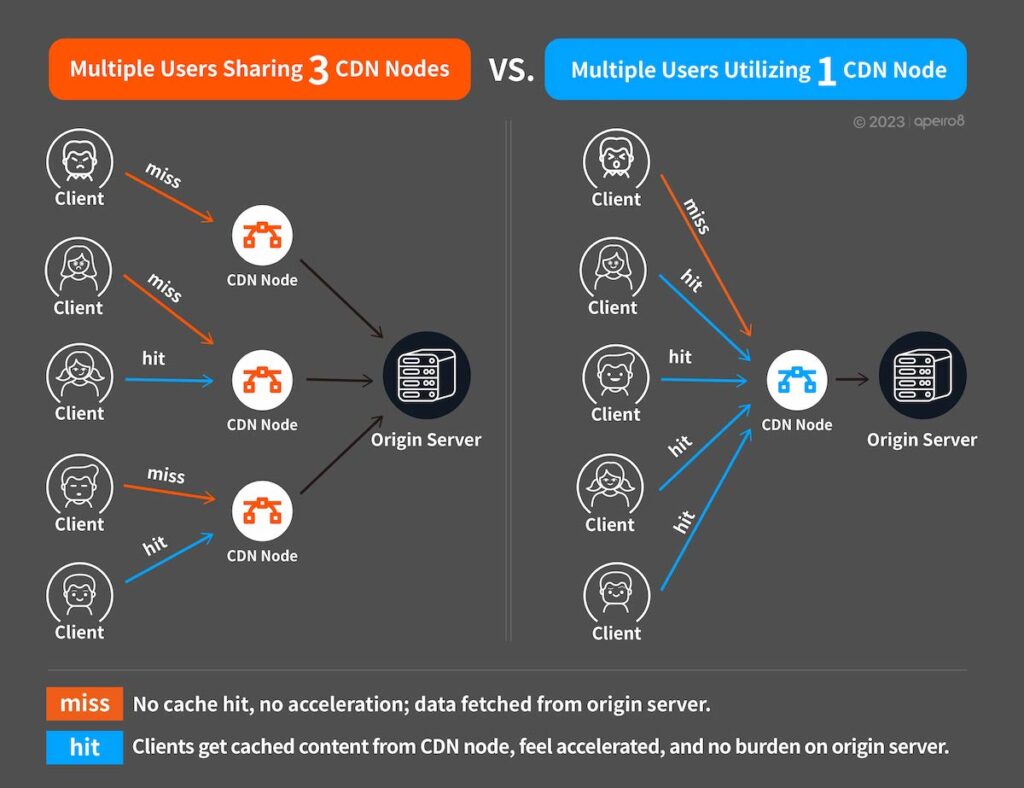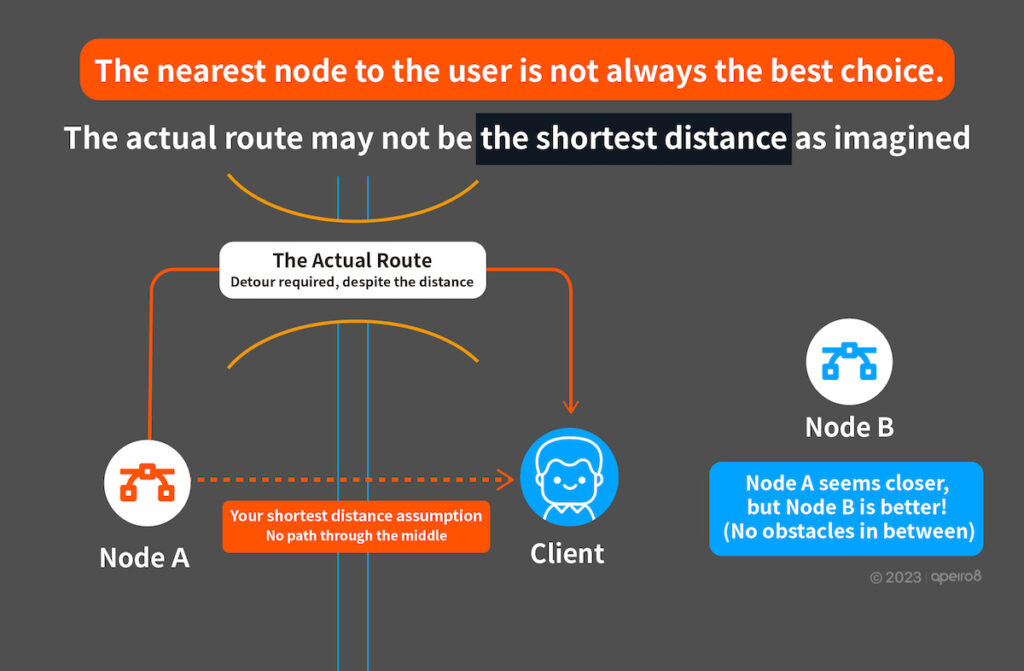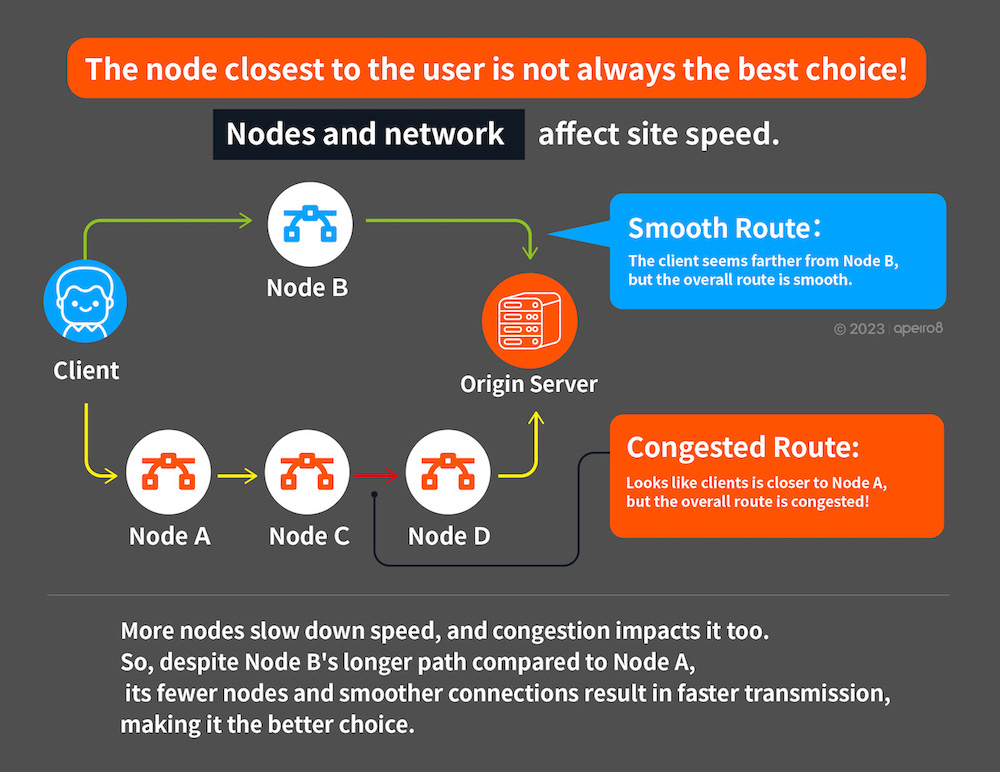Optimizing CDN Node (PoP) Quantity, Location, and Cost
 Back
Back
How to deploy CDN nodes for cost-effectiveness? Gain insight into the relationship between CDN node quantity, distribution, costs, and other key factors.
What is the Optimal CDN Node Configuration for Websites?
We already know that CDN node (PoPs) are crucial for website content caching and fast delivery. CDN uses DNS technology to ensure users access the nearest node for quicker browsing experience. But is more node always better? Is the closest node always the fastest route? How to choose a CDN provider that meets all market demands? Learn about node deployment to save costs! In this article, we’ll clarify key questions about CDN node configuration in a Q&A format.
⬛ Recommend: What is CDN? Advantages, Trends of Content Delivery Networks
Q: Is having more CDN nodes (PoPs) better?
A CDN service provider that deploys numerous nodes worldwide is considered “versatile”. This implies that for a corporate website with a global user base and increasing traffic, choosing a CDN provider with a global node configuration is generally suitable. However, if the website has a specific target market, having an excessive number of nodes globally may have adverse effects.
Q: Does Having More CDN Nodes (PoPs) Have Disadvantages?
It’s not exactly a disadvantage, but it may not always yield the best results. Here are two reasons why:
The Impact of CDN Nodes Quantity on Cache Hit Ratio
We’re all aware that the caching feature of CDN nodes can enhance website acceleration. When users have a higher chance of accessing content directly from CDN nodes, resulting in a higher Cache Hit Ratio, website content loads faster. Additionally, this reduces the load on the origin servers, including decreased bandwidth usage.
⬛ Recommend: CDN Architecture: Exploring Different Architectures and Benefits
Let’s assume a website has 5 users and allocates 3 CDN nodes. This means that 3 users could potentially be the “first user” of a CDN node. Since the content for the first user is still provided by the origin server, only 2 users can benefit from accessing cached content on the CDN node and experience noticeable speed improvements. In this scenario, the Cache Hit Ratio is 2/5.
However, if the website uses only 1 CDN node, after the first user makes a request, the content is cached on the CDN node, allowing the remaining 4 users to enjoy the accelerated experience provided by the CDN. This results in a Cache Hit Ratio of 4/5 and reduces the workload on the origin server from 3 to 1, saving 2/3 of the bandwidth costs.

CDN Node Location Equals Target Market = Cost Control
For websites with predominantly Asian users, it is cost-effective to deploy CDN nodes only in the target market, without unnecessary nodes in other regions like Europe and America.
⬛ Recommend: Choose a CDN Vendor: The Best Technical Questions to Ask
Q: I See, so Does the Location of CDN Nodes Matter?
Turns out, the placement of those nodes is no laughing matter! It’s got some serious smarts behind it.
CDN Node and Users: It’s Not all About Being Close for Better Performance!
It’s not always the case. On the Internet, the request from the client will pass through many internet service providers (ISP) before it reaches the CDN node. The path taken by the packet is known as “routing”. Usually, the fastest route is dependent on the setting of the ISP, which is calculated by the network protocol to deliver content in the fastest speed possible. However, the fastest route does not always equal to the shortest geographical distance. This is similar when navigating using Google Maps, the “fastest” route to the destination may not be the one with the shortest geographical distance, but rather a route that seems farther but less congested, as shown in the following figure:


In reality, choosing the routing path involves considering network congestion, quality, current conditions, and ISP settings. That’s why the “optimal route” is often not the one with the “shortest distance” as we might think.
Q: CDN Node Setup is Complex! How to Choose the Right Provider?
That’s right, CDN Node configuration can be a science in its own. Services provided by CDN vendors are not always the same, therefore enterprises must choose the best one that is most beneficial to their own needs. Some enterprises will use services from multiple CDN vendors to satisfy different requirements, but doing so can be very expensive and adds up the cost for maintenance.
Q: Are There Any Customizable CDN Services?
ApeiroCDN is one of the few CDN provider that can customize services based on your target market regions and request volumes.
ApeiroCDN is a unique CDN provider that tailored services to your target market and traffic, adapting to the ever-changing and complex nature of the online world. By leveraging resources from major cloud providers, our robust network and adjustable node routing, we customize node configurations that suit your target markets. With our dedicated team monitoring your services in real-time and making dynamic adjustments, your users enjoy the best experience while maximizing your investment.
⬛ Recommend: CDN Tutorial: Reverse Proxy Server Principles & Advantages






